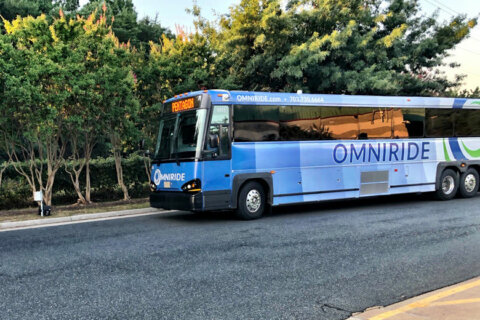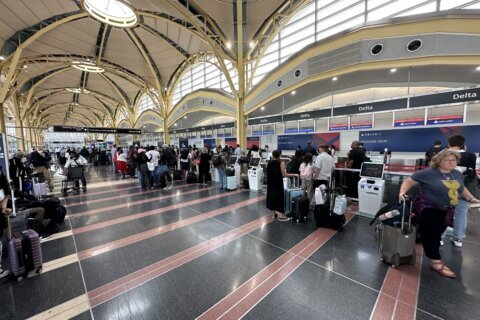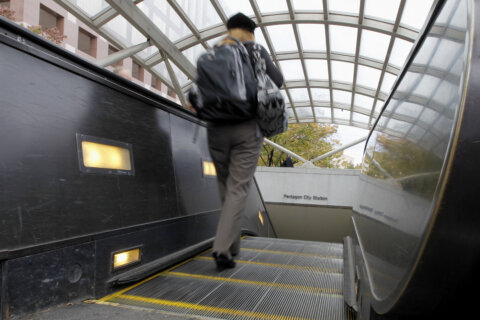Catching a game in Baltimore and then dinner in Fredericksburg, Virginia, on the weekend isn’t an easy one-fare train ride away, but there is a push to change that over the next 25 years.
The Greater Washington Partnership believes it can be made possible with the transformation of the Greater Washington Area’s regional rail network and the offer of run-through service.
“The vision really lays out a path to strategically integrate our region’s rail system,” said Joe McAndrew, vice president for transportation at the partnership.
In its technical report, Greater Washington Partnership’s “Capital Region Rail Vision” outlines ways, modifying infrastructure and getting rail providers, such as Virginia Railway Express and MARC, to work together on service options to allow trains to take people to more places in the region during one train ride.
The report said the existing rail network in the D.C. area is a superior one that has 335 total miles of rail lines and more than 54,000 daily riders. But currently, there are limitations due to infrastructure.
“The capacity of our rail system is currently at a physical bottle neck,” McAndrew said.
The report calls for close to $14 billion to be spent on improving infrastructure, which includes projects expanding the Long Bridge over the Potomac River, Union Station, and the Baltimore and Potomac Tunnel in Baltimore.
While the price tag is steep, with all the recommended improvements costing $23 billion, McAndrew said the payoff could be over $40 billion in economic output for the region, 200,000 additional jobs, and could lead to fewer cars on the road.
“It’s a huge economic opportunity to really kind of take an asset that’s currently kind of sitting on the sidelines, not being fully realized, and turning it into an asset that can really kind of drive our region’s growth,” McAndrew said.
The report said that better regional rail service would create more opportunity for communities of color and low-income areas in the region, and increase access to affordable housing as well.
McAndrew said many of the infrastructure projects are in the pipeline to be done — with Long Bridge moving closer to construction and Union Station and the Baltimore and Potomac Tunnel projects in the design phase.
To make this happen, improvements would be needed at some stations and fleet upgrades would be necessary.
The report cites the benefit of additional service for those who will work in National Landing, which is the spot in Arlington, Virginia, that Amazon has chosen for its second headquarters.
McAndrew said rail service will need to be expanded, to at least 15 minutes in between trains during peak weekday hours and less than an hour wait for passengers in the middle of the day.
He said, in a post-pandemic world, there will need to be discussions about more types of trips, offering more options for people who want to travel outside of peak hours, especially on weekends.
“With that you’ll see more people wanting to ride because it will actually be a viable option,” McAndrew said.
A seamless rider experience would be necessary too, according to the report, and that would involve all regional rail lines coming together to create a unified fare policy. The report said other transit operations, such as Metro, would also need to be a part of the plan.
“We need greater collaboration and coordination to be able to get to an operation that provides the seamless interconnectivity,” McAndrew said.
McAndrew said he believes the region can come together and make this vision a reality. His example was the year 2018, when all three jurisdictions funded Metro after a dire warning of significant cuts.








